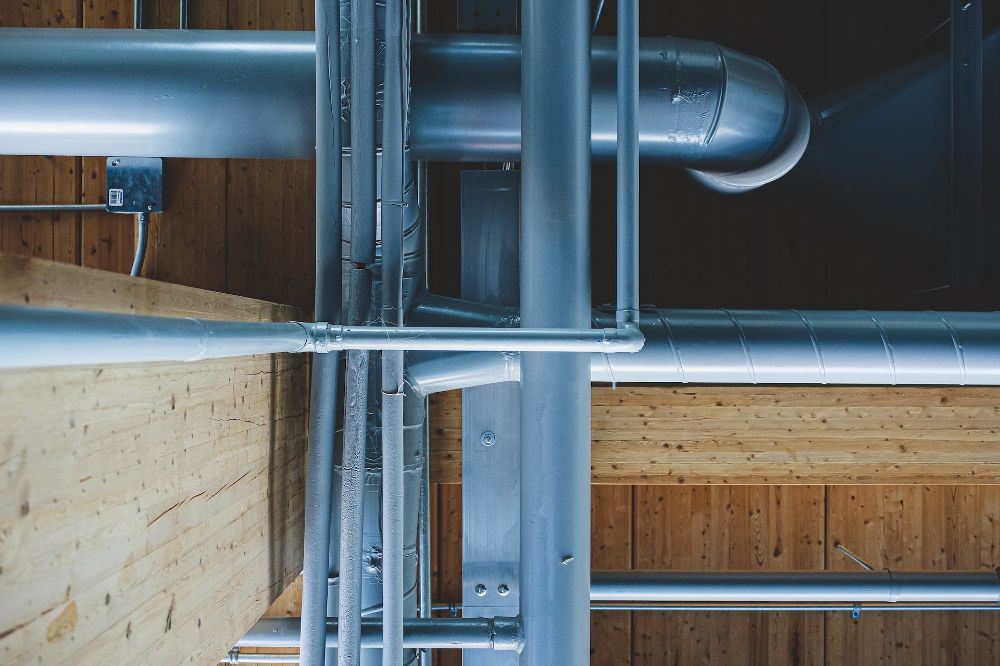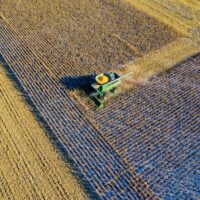Sewer pipe renovation is an essential task that every property owner has to undertake at some point. The traditional method of renovating sewer pipes involves excavation, which can be disruptive, time-consuming, and costly. Fortunately, non-invasive sewer pipe renovation techniques have revolutionized the industry, providing an alternative solution to property owners. This article will explore the benefits of non-invasive sewer pipe renovation techniques and why they are becoming increasingly popular.
Non-invasive sewer pipe renovation techniques, also known as trenchless sewer pipe renovation, refer to procedures that repair or replace sewer pipes without the need for extensive excavation. These techniques use advanced technology and equipment to access and repair sewer pipes, causing minimal disruption to the property and the environment.
Non-invasive sewer pipe renovation techniques include pipe relining, where a new liner is inserted into the damaged pipe to create a new, strong inner layer, and pipe bursting, where a new pipe is pulled through the old one, bursting it apart and replacing it.
Understanding Non-Invasive Sewer Pipe Renovation Techniques
Non-invasive sewer pipe renovation techniques are a modern solution to repairing or replacing damaged sewer pipes without extensive excavation. Traditional methods often involve digging up large areas of the property or even the street to access and replace the damaged pipe. However, non-invasive techniques are a cost-effective and efficient alternative that can be completed in a fraction of the time, with minimal disruption to the property and surrounding environment.
There are two main non-invasive sewer pipe renovation techniques: pipe relining and pipe bursting.
Pipe relining involves inserting a new liner into the damaged pipe and curing it in place with heat or UV light. The liner forms a new pipe within the old one, creating a seamless, durable surface that is resistant to corrosion and damage.
Pipe bursting involves breaking apart the damaged pipe and pulling a new pipe into place behind it. This method requires minimal excavation and is often used to replace damaged pipes that are beyond repair.
Non-invasive sewer pipe renovation techniques offer several advantages over traditional methods. They are faster, more cost-effective, and have a lower environmental impact. Additionally, the new materials used in these techniques are often more durable and long-lasting than the old pipe, resulting in improved performance and longevity.
Overall, non-invasive sewer pipe renovation techniques are a modern and effective solution to sewer pipe damage. By choosing a qualified and experienced contractor to perform these services, property owners can ensure that their sewer pipes are renovated properly, with minimal disruption and cost.
What are the advantages of non-invasive sewer pipe renovation?
Non-invasive sewer pipe renovation techniques offer several advantages over traditional methods. Here are some of the key benefits:
- Minimal disruption: Non-invasive sewer pipe renovation techniques require minimal excavation, which means that there is minimal disruption to the property and the surrounding environment. This makes them ideal for properties that are located in busy areas or those that have landscaping or other features that would be difficult to replace.
- Cost-effective: Non-invasive sewer pipe renovation techniques are generally more cost-effective than traditional methods. The reduced excavation and labor costs, as well as the faster completion times, can save property owners a significant amount of money.
- Faster completion times: Because non-invasive sewer pipe renovation techniques require minimal excavation, they can be completed much faster than traditional methods. This means that property owners can get back to their normal routines sooner, with minimal disruption.
- Improved sewer pipe performance and longevity: Non-invasive sewer pipe renovation techniques often result in improved performance and longevity of the sewer pipes. This is because the new liners or pipes used in these techniques are made from durable materials that are resistant to corrosion and damage.
- Environmentally friendly: Non-invasive sewer pipe renovation techniques are also more environmentally friendly than traditional methods. They produce less waste, require fewer resources, and have a lower carbon footprint.
Overall, the advantages of non-invasive sewer pipe renovation techniques make them an attractive option for property owners who want to renovate their sewer pipes without the disruption and cost associated with traditional methods.
How do non-invasive sewer pipe renovation techniques compare to traditional methods?
Non-invasive sewer pipe renovation techniques differ significantly from traditional methods in several ways. Here’s a closer look at the key differences:
- Excavation: Traditional sewer pipe renovation methods require significant excavation to access the damaged pipes. This excavation can be extensive and disruptive, often involving digging up large areas of landscaping or even the street in front of the property. In contrast, non-invasive techniques require minimal excavation, reducing the disruption to the property and surrounding environment.
- Time: Traditional sewer pipe renovation methods can take a long time to complete. The excavation and replacement process can take several days or even weeks, depending on the extent of the damage. In contrast, non-invasive techniques are faster and can often be completed in a matter of hours.
- Cost: Traditional sewer pipe renovation methods can be expensive, especially if extensive excavation is required. Non-invasive techniques are generally more cost-effective, as they require less labor and equipment, and the work can be completed more quickly.
- Durability: Both traditional and non-invasive sewer pipe renovation methods can produce durable results, but non-invasive techniques often result in improved performance and longevity of the sewer pipes. This is because the new liners or pipes used in non-invasive techniques are made from durable materials that are resistant to corrosion and damage.
- Environmental impact: Traditional sewer pipe renovation methods can have a significant environmental impact due to the excavation required and the waste produced. In contrast, non-invasive techniques are more environmentally friendly, producing less waste, using fewer resources, and having a lower carbon footprint.
Overall, non-invasive sewer pipe renovation techniques offer many advantages over traditional methods, including faster completion times, reduced costs, and minimal disruption to the property and surrounding environment. While both methods can produce durable results, non-invasive techniques are becoming increasingly popular due to their many benefits.
How can you identify if your sewer pipes need renovation?
Sewer pipes are an essential component of any property’s plumbing system, and it’s important to keep them in good condition. Here are some signs that your sewer pipes may need renovation:
- Slow draining: If your sinks, toilets, or showers are draining slowly, it could be a sign of a blockage in your sewer pipes. This blockage could be due to a buildup of debris or a damaged pipe.
- Foul odors: If you notice foul odors coming from your drains or outside your property, it could be a sign of a sewage backup or a damaged sewer pipe.
- Mold or mildew growth: If you notice mold or mildew growing in your home or property, it could be a sign of a water leak. This leak could be coming from a damaged sewer pipe.
- Cracks or damage: If you notice cracks or other damage to your sewer pipes, it’s essential to have them inspected as soon as possible. These cracks could allow sewage to leak out, potentially causing significant damage to your property and the environment.
- Age: Sewer pipes have a limited lifespan, and if your pipes are over 50 years old, they may be in need of renovation. Over time, pipes can corrode, crack, or collapse, leading to significant damage.
If you notice any of these signs, it’s essential to have your sewer pipes inspected by a professional. A qualified plumber or sewer pipe specialist can assess the damage and recommend the best course of action, whether that’s traditional renovation or non-invasive techniques.
By identifying issues early on, property owners can avoid more significant problems down the line and ensure that their sewer pipes are functioning properly.
What are the key factors to consider before opting for non-invasive sewer pipe renovation?
Non-invasive sewer pipe renovation techniques offer many benefits over traditional methods, but they may not be the best choice for every situation. Here are some key factors to consider before opting for non-invasive sewer pipe renovation:
- Type and extent of damage: Non-invasive sewer pipe renovation techniques are best suited for repairing small sections of damaged pipes, such as cracks or holes. If the damage is more extensive, traditional methods may be more appropriate.
- Pipe material: Non-invasive sewer pipe renovation techniques are most effective on certain types of pipes, such as PVC or cast iron. If your pipes are made from a different material, traditional methods may be necessary.
- Property location: If your property is located in a sensitive area, such as a densely populated urban area or a protected natural environment, non-invasive techniques may be the best choice. These techniques require minimal excavation, reducing the impact on the surrounding area.
- Cost: While non-invasive sewer pipe renovation techniques are generally more cost-effective than traditional methods, they may not be the cheapest option in every case. It’s important to consider the cost of both methods and weigh the benefits against the cost.
- Professional expertise: Non-invasive sewer pipe renovation techniques require specialized equipment and expertise. It’s important to choose a contractor with experience in these techniques to ensure that the job is done correctly.
By considering these factors, property owners can make an informed decision about whether non-invasive sewer pipe renovation techniques are the best choice for their situation.
It’s essential to work with a qualified professional who can assess the damage and recommend the best course of action, whether that’s non-invasive techniques or traditional methods. With the right approach, property owners can ensure that their sewer pipes are renovated properly, with minimal disruption to their property and the environment.
Frequently Asked Questions About Non-Invasive Sewer Pipe Renovation
Here are some common questions and answers about non-invasive sewer pipe renovation techniques:
- What are the advantages of non-invasive sewer pipe renovation techniques?
Non-invasive sewer pipe renovation techniques offer several advantages over traditional methods, including minimal disruption, reduced costs, faster completion times, improved sewer pipe performance and longevity, and a lower environmental impact.
- How do non-invasive sewer pipe renovation techniques work?
Non-invasive sewer pipe renovation techniques use advanced equipment and technologies to repair or replace damaged sewer pipes without extensive excavation. The two most common techniques are pipe relining and pipe bursting.
- How long does it take to complete non-invasive sewer pipe renovation?
The length of time it takes to complete non-invasive sewer pipe renovation depends on the extent of the damage and the size of the project. However, non-invasive techniques are generally faster than traditional methods and can often be completed in a matter of hours.
- How long do the results of non-invasive sewer pipe renovation last?
The results of non-invasive sewer pipe renovation can last for many years, depending on the materials used and the extent of the damage. In some cases, non-invasive techniques can provide a longer-lasting solution than traditional methods.
- Is non-invasive sewer pipe renovation more expensive than traditional methods?
Non-invasive sewer pipe renovation techniques are generally more cost-effective than traditional methods. The reduced excavation and labor costs, as well as the faster completion times, can save property owners a significant amount of money.
- Can non-invasive sewer pipe renovation be used on all types of pipes?
Non-invasive sewer pipe renovation techniques are most effective on certain types of pipes, such as PVC or cast iron. If your pipes are made from a different material, traditional methods may be necessary.
- Do I need to hire a specialized contractor for non-invasive sewer pipe renovation?
Yes, non-invasive sewer pipe renovation techniques require specialized equipment and expertise. It’s important to choose a contractor with experience in these techniques to ensure that the job is done correctly.
By understanding these frequently asked questions, property owners can make an informed decision about whether non-invasive sewer pipe renovation techniques are the best choice for their situation.
Top Companies Providing Non-Invasive Sewer Pipe Renovation Services
Here are some of the top companies providing non-invasive sewer pipe renovation services:
- Nu Flow Technologies: Nu Flow Technologies is a global leader in trenchless pipe repair and has been providing non-invasive sewer pipe renovation services for over 20 years. Their technologies include pipe lining, pipe bursting, and CIPP (cured-in-place pipe) lining.
- Pipe Restoration, Inc.: Pipe Restoration, Inc. is a leading provider of non-invasive sewer pipe renovation services in the United States. Their trenchless technologies include pipe lining, pipe bursting, and epoxy coating.
- Trenchless Innovations: Trenchless Innovations is a company that specializes in trenchless sewer and drain repairs, including non-invasive sewer pipe renovation. Their services include pipe lining, pipe bursting, and slip lining.
- Flow-Liner Systems: Flow-Liner Systems is a manufacturer and installer of trenchless pipe lining systems for the rehabilitation of sewer and water infrastructure. They offer non-invasive sewer pipe renovation services using their patented technologies.
- Sewer Line Repair: Sewer Line Repair is a company that specializes in trenchless sewer line repair and offers a range of non-invasive sewer pipe renovation services. Their services include pipe lining, pipe bursting, and CIPP lining.
These are just a few of the top companies providing non-invasive sewer pipe renovation services. It’s important to choose a qualified and experienced contractor to ensure that the job is done correctly and efficiently.
By working with a reputable company, property owners can ensure that their sewer pipes are renovated properly, with minimal disruption and cost.
Conclusion: Why Non-Invasive Sewer Pipe Renovation is the Future
Non-invasive sewer pipe renovation techniques are rapidly gaining popularity, and for good reason. These techniques offer many advantages over traditional methods, including minimal disruption, reduced costs, faster completion times, improved sewer pipe performance and longevity, and a lower environmental impact.
As our infrastructure ages, the need for sewer pipe renovation will only continue to grow. Non-invasive techniques provide a cost-effective and efficient solution for property owners, with minimal disruption to their daily lives and the surrounding environment.
Furthermore, non-invasive sewer pipe renovation techniques are constantly improving, with new technologies and materials being developed all the time. This means that non-invasive techniques will only become more effective and efficient in the future, further solidifying their place as the go-to solution for sewer pipe renovation.
In summary, non-invasive sewer pipe renovation is the future of sewer pipe renovation, offering many benefits over traditional methods. By choosing a qualified and experienced contractor to perform these services, property owners can ensure that their sewer pipes are renovated properly, with minimal disruption and cost.
Source: https://renowacjarur.eu









